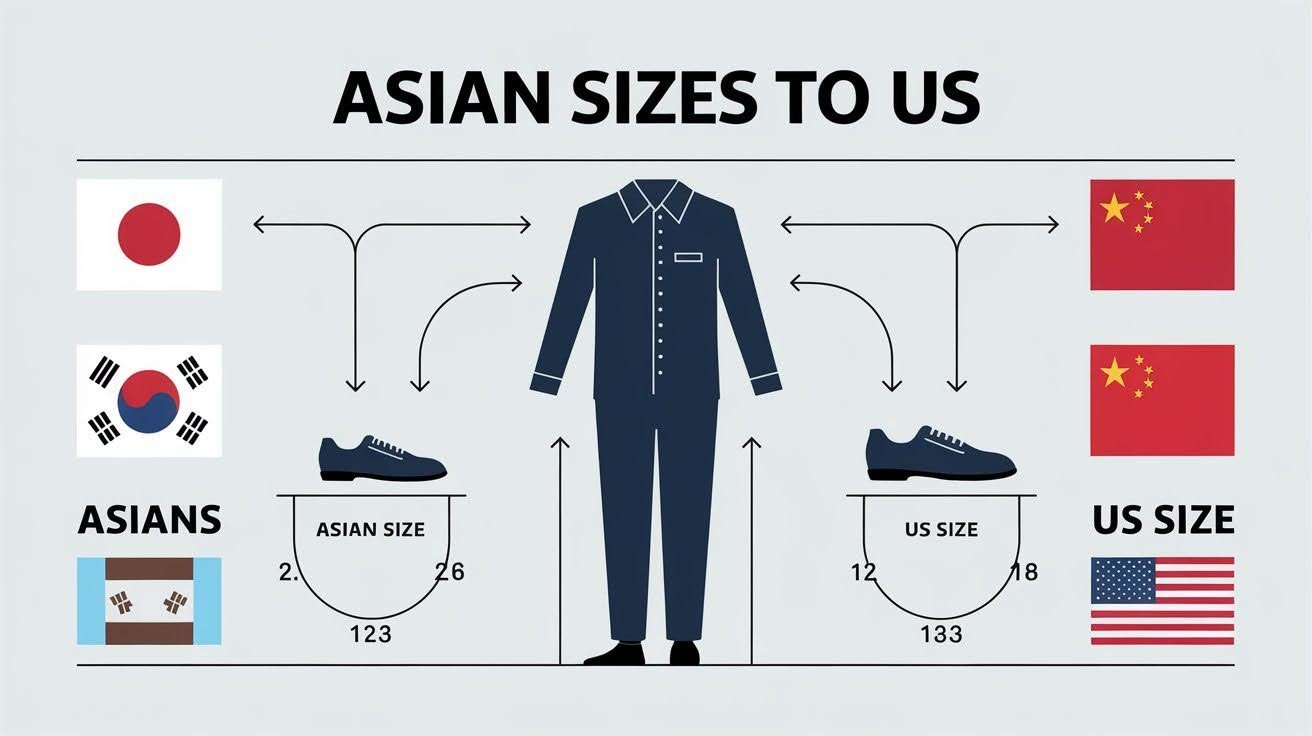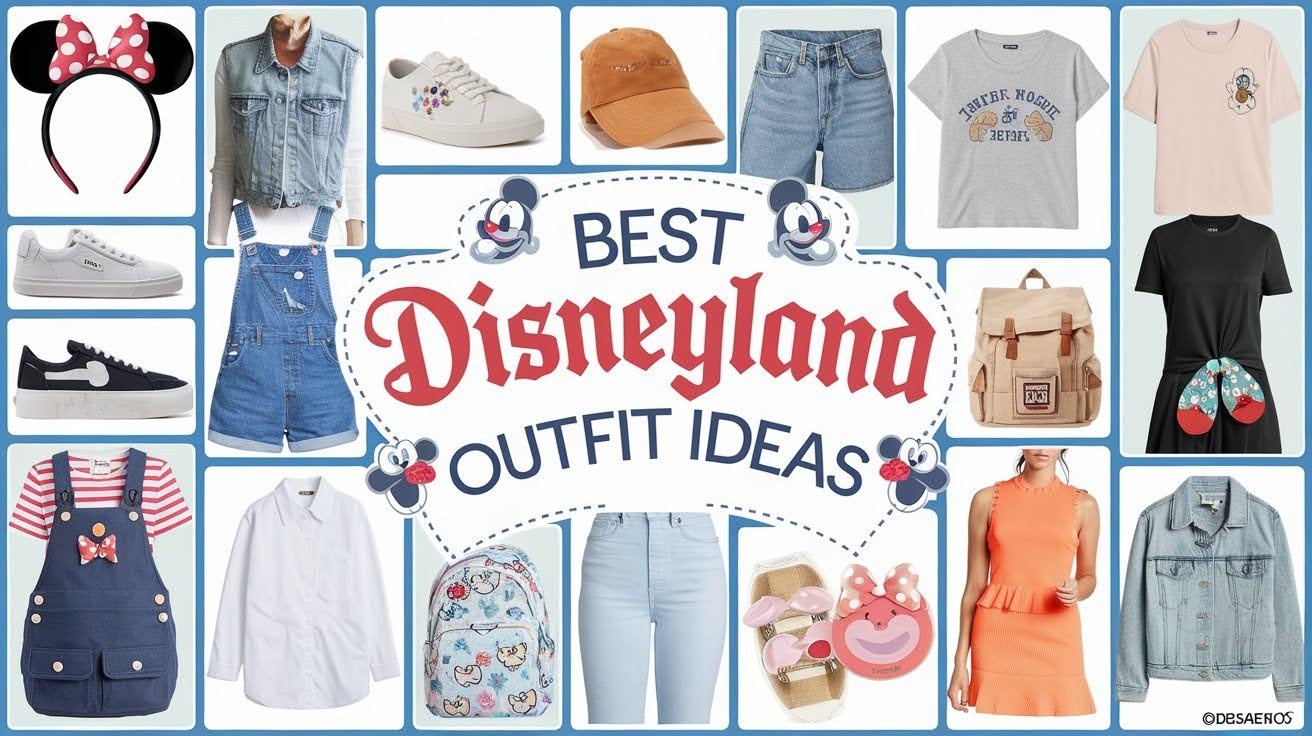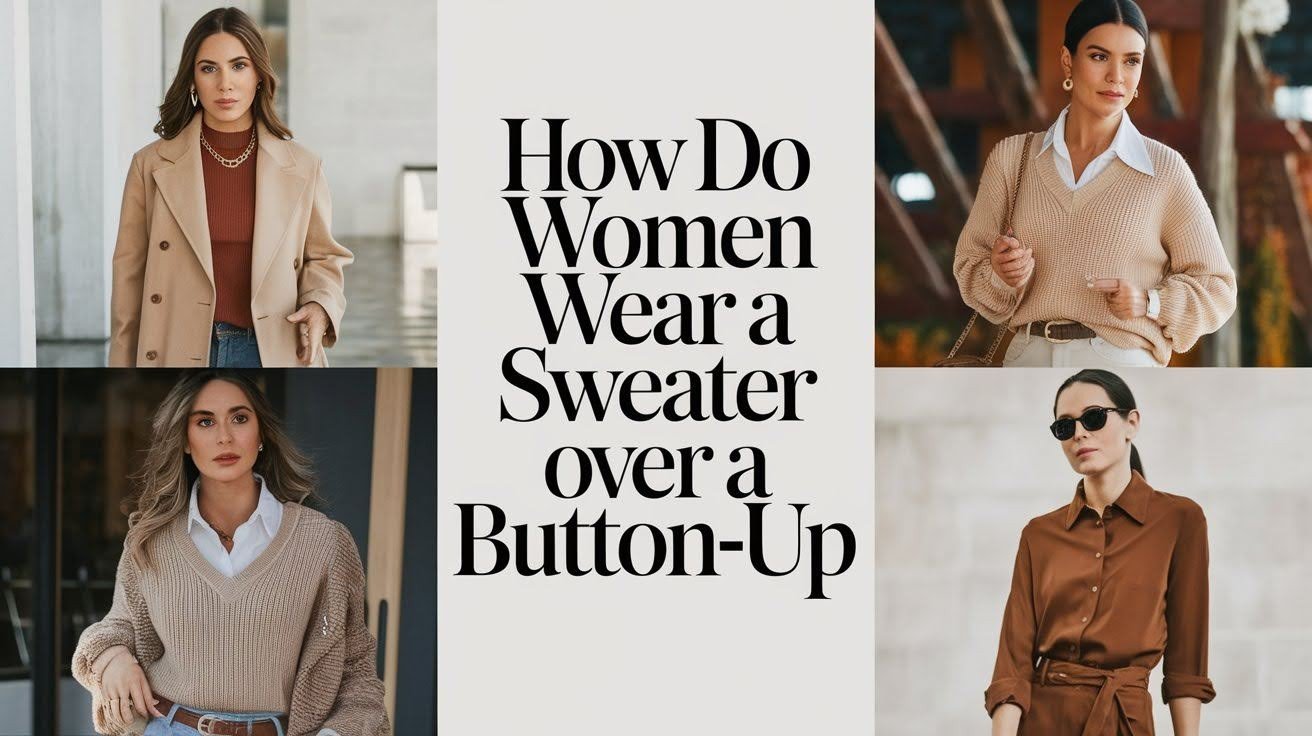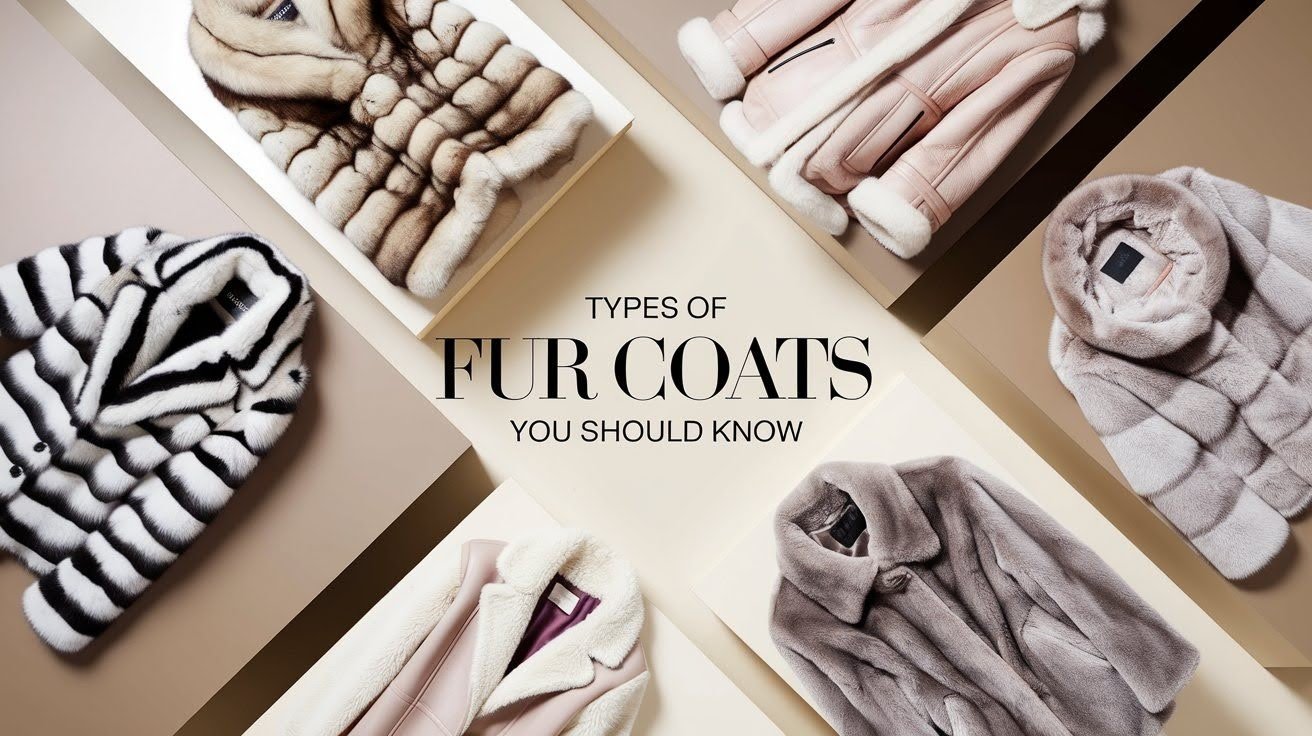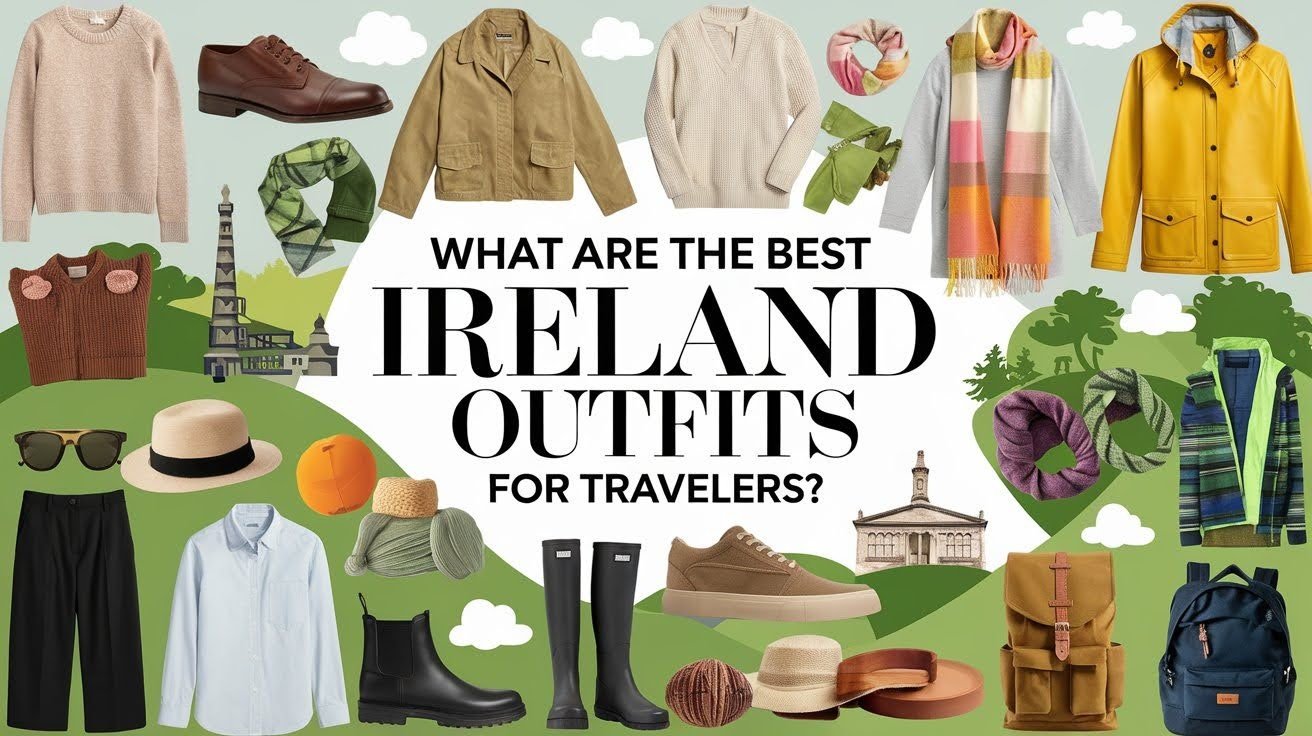Shopping for clothes from Asian brands can feel like solving a puzzle. You never know what size to order. I’ve been there. Countless times. After years of getting the wrong sizes and learning from expensive mistakes, I’m sharing everything I know about Asian to US size conversions.
In this guide, you’ll learn why Asian sizes run smaller, how to use conversion charts for men’s, women’s, and children’s clothing, plus shoe and accessory sizing. I’ll show you how to measure yourself properly and avoid the most common sizing mistakes.
You’ll never have to guess your size again. I’ve tested dozens of Asian brands and compiled real conversion data that actually works. No more returns. No more clothes that don’t fit.
Let’s solve your sizing problems once and for all.
Why Are Asian Sizes So Different from US Sizes?

The sizing gap isn’t random. There are real reasons behind it.
Body proportions matter. Asian clothing manufacturers design for different average body types. Generally, Asian sizes run 1-2 sizes smaller than US equivalents.
Think about it this way: if you’re a US Medium, you’ll likely need an Asian Large or XL.
Cultural preferences play a role too. Many Asian countries prefer looser, more relaxed fits. This affects how brands cut their clothes.
Manufacturing standards also differ between countries. What one brand calls “Large” might be another brand’s “Medium.”
Here’s what really surprised me: even within Asia, sizes vary dramatically between countries!
Asian to US Clothing Size Conversion Charts
Ready to never guess your size again? These charts will save you hours of frustration.
A. Men’s Clothing Size Chart
| Asian Size | US Size | Chest (inches) | Waist (inches) |
| S | XS | 34-36 | 28-30 |
| M | S | 38-40 | 30-32 |
| L | M | 42-44 | 32-34 |
| XL | L | 46-48 | 34-36 |
| XXL | XL | 50-52 | 36-38 |
| XXXL | XXL | 54-56 | 38-40 |
Always check the brand’s specific size chart. Some Japanese brands run even smaller than this general guide.
B. Women’s Clothing Size Chart
| Asian Size | US Size | Bust (inches) | Waist (inches) | Hips (inches) |
| S | XS | 32-34 | 24-26 | 34-36 |
| M | S | 34-36 | 26-28 | 36-38 |
| L | M | 36-38 | 28-30 | 38-40 |
| XL | L | 38-40 | 30-32 | 40-42 |
| XXL | XL | 40-42 | 32-34 | 42-44 |
Women’s sizing can be trickier. Asian brands often prioritize smaller waist measurements.
I’m a US size 8, but I order size L or XL from most Asian brands.
C. Children’s Clothing Size Chart
Kids’ sizes follow age groups, but Asian brands tend to run smaller here too.
| Asian Age | US Age | Height (inches) | Weight (lbs) |
| 2T | 18-24M | 32-35 | 24-28 |
| 3T | 2T | 35-38 | 28-32 |
| 4T | 3T | 38-41 | 32-36 |
| 5 | 4T | 41-44 | 36-40 |
| 6 | 5 | 44-47 | 40-44 |
Always size up for kids’ Asian clothes. They grow fast anyway!
Asian Shoe Sizes to US Conversion
Shoes are where things get really confusing. Different countries use completely different numbering systems.
Men’s Shoe Size Conversion
| Asian Size | US Size | Foot Length (cm) |
| 39 | 6 | 24.5 |
| 40 | 7 | 25.5 |
| 41 | 8 | 26.0 |
| 42 | 9 | 26.5 |
| 43 | 10 | 27.5 |
| 44 | 11 | 28.0 |
| 45 | 12 | 28.5 |
Women’s Shoe Size Conversion
| Asian Size | US Size | Foot Length (cm) |
| 35 | 5 | 22.5 |
| 36 | 6 | 23.0 |
| 37 | 7 | 23.5 |
| 38 | 8 | 24.5 |
| 39 | 9 | 25.0 |
| 40 | 10 | 25.5 |
| 41 | 11 | 26.0 |
Chinese sizes differ from Japanese sizes. Korean brands have their own system too.
My advice? Always measure your foot in centimeters. Most Asian brands list foot length measurements alongside their sizing.
Accessories and Underwear Sizing
These smaller items trip people up constantly.
Bras are the worst offenders. Asian bra sizing uses completely different cup and band measurements. A 32C in the US might be a 70D in Asian sizing.
Belt sizes: Asian belts typically run 2-4 inches smaller than marked. If you wear a 32-inch belt in the US, order a 34 or 36 from Asian brands.
Hat sizes: Generally run smaller. Asian “one size fits all” rarely fits larger heads comfortably.
Ring sizes: Follow international conversion charts. Asian size 12 equals US size 6.
How to Accurately Measure Yourself for Asian Sizes
Forget what you think you know about your measurements. Let’s get precise.
You’ll need a flexible measuring tape, mirror, notepad, and someone to help if possible.
For tops, measure chest at fullest part, waist at narrowest point, shoulder width from point to point, and note your height and weight.
For bottoms, measure waist where pants typically sit, hips at fullest part, inseam from crotch to ankle, and check thigh circumference at widest point.
The golden rule: When in doubt between two sizes, always size up.
I learned this the hard way with a beautiful jacket that I could barely zip up.
Popular Asian Brands & Their Sizing Standards
Not all Asian brands size the same way. Here’s what I’ve learned from years of trial and error.
- Uniqlo (Japanese): Runs true to size, closest to US sizing
- Muji (Japanese): Tends to run small, size up once
- Korean streetwear brands: Usually run 1-2 sizes small
- Chinese fast fashion: Extremely inconsistent, always check reviews
- Japanese designer brands: Often run very small, size up 2 sizes
Smart shopping tip: Read customer reviews religiously. Other buyers often share their normal US size and what they ordered.
Common Mistakes to Avoid When Converting Sizes
I’ve made every mistake in the book. Learn from my errors!
Mistake 1: Assuming all Asian brands are the same. Each country and brand has different standards. Always check individual size charts.
Mistake 2: Only looking at letter sizes. Those S, M, L labels mean nothing without measurements. Focus on inches and centimeters.
Mistake 3: Forgetting about shrinkage. Many Asian brands shrink more than US clothes after washing. Factor this in.
Mistake 4: Ignoring fabric stretch. Non-stretch fabrics are less forgiving. Size up more generously for structured items.
Mistake 5: Not reading return policies. Some brands don’t accept returns for size issues. Know the policy before buying.
The biggest mistake? Ordering your usual US size without checking anything else. Trust me, I have a closet full of too-small clothes that taught me this lesson.
Conclusion
Converting Asian sizes to US doesn’t have to be a guessing game anymore. You now have the tools to shop confidently. I’ve shared everything I learned from years of trial and error. The conversion charts, measurement tips, and brand insights will save you time and money.
Remember the golden rule: when in doubt, size up. Start with one item from a new Asian brand. Test their sizing before placing bigger orders. Keep notes on what works for each brand you try. Your perfect-fitting wardrobe is waiting.
I’m curious about your experiences. Have you struggled with Asian sizing before? What brands have surprised you with their fit? Share your sizing stories in the comments below. Your experience might help another reader avoid the same mistakes I made.
Happy shopping!
Frequently Asked Questions
Do all Asian brands run the same size?
No, sizing varies significantly between countries and brands. Japanese brands like Uniqlo run closer to US sizes, while Korean and Chinese brands typically run 1-2 sizes smaller.
Should I always size up when buying from Asian brands?
Generally yes, but check each brand’s size chart first. When measurements fall between two sizes, always choose the larger option for a comfortable fit.
How do I know if an Asian brand ships internationally?
Most popular Asian brands now ship worldwide, but check their shipping page before ordering. Some brands use third-party services or local distributors for international orders.
Can I return clothes if the Asian size doesn’t fit?
Return policies vary by brand and retailer. Always read the return policy before purchasing, as some brands don’t accept returns for sizing issues on international orders.
Why don’t Asian brands just use US sizing standards?
Asian brands design for their local markets first, where different body proportions and style preferences exist. Manufacturing costs and regional regulations also influence their sizing systems.

